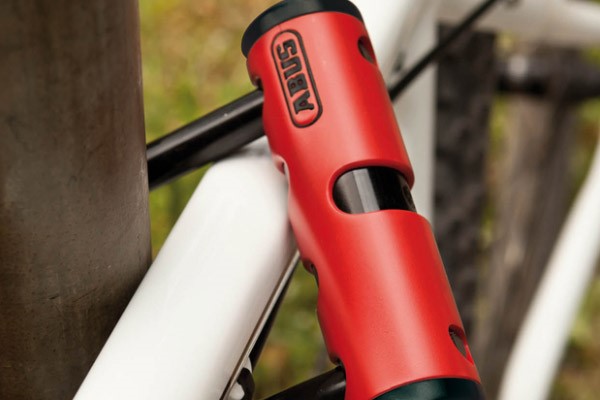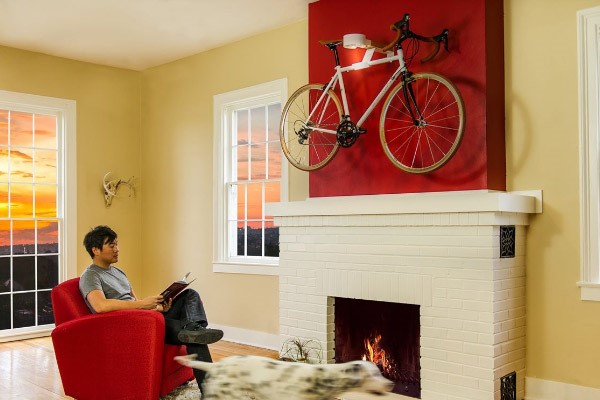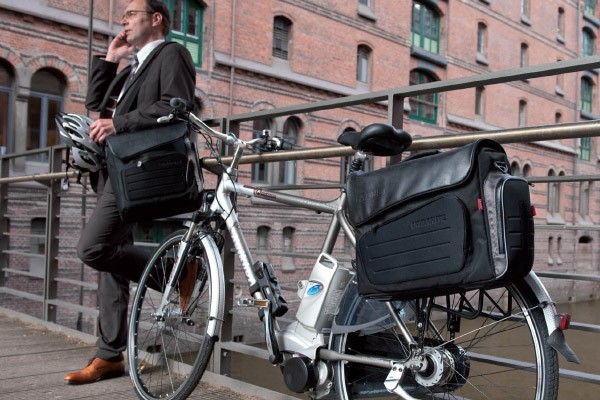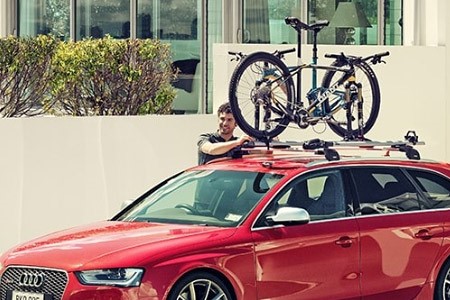Updated: 26th May 2021
Locking your bike up in a safe place is essential to the safety of your bike. Whether that means keeping your bike safely in your home or locked to an immovable object at the bus station, there are always good practices and measures to take to ensure the safety of your favourite transport machine.
Frame Number
Every bike comes with a unique frame number. Make sure that you record the frame number of your new bike as soon as you get it.
When you buy a bike from us, we will send you an email which will usually include your frame number. You can also find the frame number your bike frame, imprinted or stuck on. It is advisable to check that both number match. Frame numbers are usually located underneath your bike, on the bottom bracket shell or downtube, and maybe found under a rock-guard.
Approved Bike Locks
Bike locks can come in a wide variety of shapes and sizes, but only some of those are approved for insurance use. This means that you must ensure the lock you use is proven strong enough to lock up your bike, should you want to claim insurance in case your bicycle is stolen.
Sold Secure is a company that rates locks on their strength, and is the standard which is used by insurance companies to determine which locks are suitable for use. Thatcham, on the other hand, rates locks for cars and other vehicles, and would come into play when you are looking to lock your bike in your car or van. We have outlined the different ratings of Sold Secure locks for your ease.


Bronze
Bicycles under the value of £500
Bronze rated bike locks are suitable for locking bikes for under the value of £500. They are usually lighter weight than higher security locks and so easier to carry around. This makes them more susceptible to theft, however.

Silver
Bicycles under the value of £1000
Silver rated bike locks are suitable for locking bikes for under the value of £1000. They offer a greater level of security to Bronze rated locks, while adding a little bit of weight, or coming at a greater price point.

Gold
Bicycles valued at £1000 and above
Gold rated locks are suitable for locking bikes with the value of £1000 and above. These locks can be fairly heavy, but are robust and provide great security for your precious bike.

Diamond
e Bikes and very high value bikes
The highest rated bicycle shocks are Diamond rated and are suitable for locking e bikes and very high value road and mountain bikes.
How and where to keep your bike
To make sure your bike is kept safely we have outlind suggestions of how and where to store you bike below, giving a great guideline for the safekeeping of your bike.
Storing your bike at home
- Bikes should not be left outside.
- We suggest that you keep your bike inside. This can include the house, a wooden shed, a garage, and a steel bike container.
- It's probably not necessary to keep your bike inside, though windows and doors should be closed and locked, so that potential thieves won't be able to easily get your bike.
- If the bike is inside a shed, container or garage, we suggest two ways of storing it:
- Lock the bike within the garage, shed or container, to an immovable object such as a ground anchor or similar. Make sure you use a lock that's approved for use for the value of your bike.
- Use a 5-pin padlock or 5-lever mortice dead lock on the door of the garage, shed or container.
- All doors and windows of the garage, container or shed should to be locked, preventing potential thieves from getting in.
- The bike should never be left outside of the flat, even if it is secured with a lock or chain to a balcony or bike rack.
- You could keep the bike in a communal hallway inside the building, but make sure it is locked to an immovable object such as a radiator or metal rail, and the lock fits the security requirements.
- If you are storing your bike in an underground carpark, make sure it is secured with a barrier or needs key access to enter. Only residents of the building should have access to the carpark and also make sure the bike is locked to an immovable object such as a bike rack.
- If the bike is kept inside a communal bike locker or shed, be sure to lock it to an immovable object such as a bike rack with a lock that meats the security requirements.
- The bike can should be left outside.
- The bike should be kept inside (in the house, a garage, a wooden shed, a steel bike container).
- If the bike is inside the house, it’s not probably necessary to lock the bike up, however it's best to keep it in your own room. Make sure your windows and doors are closed and locked, preventing potential thieves from getting in. If you aren’t able to lock your room, see below.
- Bikes can be kept in a communal area of the shared house, like a hallway, though it must always be locked to an immovable object such as a radiator with a lock that meets the security requirements.
- As above, if the bike is inside a shed, container or garage, we suggest two ways to secure it:
- Lock the bike within the garage, shed or container, to an immovable object such as a ground anchor or similar. Make sure the lock meets certain security requirements.
- Use a 5-pin padlock or 5-lever mortice dead lock on the door of the garage, shed or container.
- All doors and windows of the garage, container or shed should to be locked, preventing potential thieves from getting in.

Storing your bike when at work
- You shouldn't leave your bike for more than 24 hours
- Always lock your bike to an immovable object, and ensure the lock meets the security requirements.
- Attach the lock to the bike through the frame and any quick release wheels. Securing the bike through the quick release wheel alone will most likely leave you with only a wheel when you return to the bike. Some locks come with an extra cable to wrap around valuable parts of the bike.
- If you’re locking the bike in a shed or container, then make sure the lock meets the security requirements and is secured to an immovable object.

Storing your bike when out
- Try not leaving your bike anywhere for more than 12 hours, except for train and bus stations.
- Try not leaving your bike for more than 24 hours if it is at a train or bus station.
- Bikes should always be locked to immovable objects and with locks that meet the security requirements
- Locks are best attached to the bike through the frame and any quick release wheels. Securing the bike through the quick release wheel alone will most likely leave you with only a wheel when you return to the bike.

Storing your bike in a vehicle
- If you're leaving your bike in your convertible car, make sure the top is up and secure, and that the windows are closed and the doors locked.
- If your bike is on a bike/roof rack, make sure it is locked with a lock that meets security requirements.
- Bikes can be kept inside of cars, but must remain out of sight, for example in the boot. Hiding the bike with a blanket or similar in the back seat is not sufficient.
- When keeping the bike inside a car overnight, it's important to have at least one of the following:
- Thatcham category 1 alarm and immobiliser
- Thatcham category 2 immobiliser
- Thatcham category 3 steering lock
- It's important to ensure that all windows and doors are closed and locked, stopping potential thieves from getting in. Any additional security that you may have - such as an alarm or immobilisers - should be activated, helping to secure the vehicle.
- When bikes are kept inside vans, it's important to keep them out of site from the outside. This means that you should not be able to see into the back of the van from the front cab and you must not have windows into the back of the van. Don't underestimate thieves - they can tell if something is hiding underneath a blanket, so rather be safe and not hide your precious bike beneath anything.
- When keeping the bike inside a van overnight, it's important to have at least one of the following:
-
- Thatcham category 1 alarm and immobiliser
- Thatcham category 2 immobiliser
- Thatcham category 3 steering lock

Storing your bike when on holiday
- If you are leaving the bike in a vehicle, then follow the guidelines above for “storing your bike in a vehicle”.
- If you’re staying at a hotel or B&B, follow the guidlines above for “Storing your bike when out” or “Storing your bike in a vehicle”, depending on where you are keeping your bike.
- If you are in your own private holiday home, caravan, or chalet, you follow the same guidelines for “Storing your bike at home when you live in a private house” or “Storing your bike in a vehicle” depending on where the bike is being kept.
- Follow the guidelines for “Storing your bike when out” whilst you are out and about on holiday.




